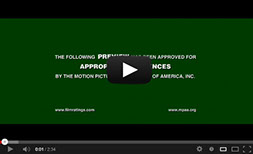

1. Choice of Law
We have represented and continue to represent individuals who were catastrophically injured in automobile accidents and covered by Michigan no fault automobile insurance policies. A number of those individuals were from other states or were from Michigan and moved to other states.
Unlike Michigan, most states have some form of first party bad faith insurance law. In these cases in other states, we inevitably face the issue of which law applies, Michigan law that bars first party bad faith claims, or the state in which the client lives, where such claims are recognized. We have been successful in arguing that the law of states such as Arizona and Hawaii apply.
In Barten v. State Farm Mutual Automobile Insurance Company, we successfully persuaded the Court to apply Arizona law to the bad faith claim. In Arizona, bad faith conduct by an insurance company towards its insured is a tort claim (that is, a personal injury type claim).
In analyzing which law to apply, Michigan or Arizona, the Court looked to the Restatement (Second) of Conflict of Laws, in particular Sections 145 and 146. Those sections set forth various factors for consideration, which a court then “applies…to the general principles listed in Restatement §6(2).” Case 4:12-cv-00399-CKJ-LAB Document 360 Filed 07/01/14 Page 4 of 20 (citations omitted).
The Court quoted Sections 145 and 146:
(1) The rights and liabilities of the parties with respect to an issue in tort are determined by the local law of the state which, with respect to that issue, has the most significant
relationship to the occurrence and the parties under the principles stated in §6.
(2) Contracts (sic) to be taken into account in applying the principles of §6 to determine the law applicable to an issue include:
(a) the place where the injury occurred,
(b) the place where the conduct causing the injury occurred,
(c) the domicil, residence, nationality, place of incorporation and place of business of the parties, and
(d) the place where the relationship, if any, between the parties is centered. These contacts are to be evaluated accordance to their relative importance with respect to the particular issue. [§145]
In an action for a personal injury, the local law of the state
where the injury occurred determines the rights and liabilities where the injury occurred determines the rights and liabilities of the parties, unless, with respect to the particular issue, some other state has a more significant relationship under the principles stated in §6 to the occurrence and the parties, in
which event the local law of the other state will be applied. [§146]
Case 4:12-cv-00399-CKJ-LAB Document 360 Filed 07/01/14 Pages 5,8 of 20
Under Section 145, the Court found the place of injury to be Arizona. Although Mr. Barten lived in Michigan at the time of the accident and for a short time thereafter, he has lived in Arizona since 1996 and his physical and mental injuries from State Farm’s misleading conduct occurred while he was in Arizona.
The Court held State Farm’s bad faith conduct occurred in Michigan. As for the third factor, while State Farm is headquartered in Illinois and the claims handling was performed by people in Michigan, the Court applied Arizona law that the plaintiff’s domicile (here, mostly in Arizona) is of greater significance than that of the defendant. Finally, the Court held the relationship was primarily centered in Michigan.
While the number of factors in favor of Michigan and Arizona were tied based on Section 145, as the Court stated, under Arizona conflicts law, the proper analysis is “qualitative, not quantitative.”
The Court then analyzed Section 146 and the factors set forth in Section 6(2). While some of the factors have little or no application in tort claims, the Court found that two of them (§6(2)(b) & (c)) were of most importance in this case and weighed in favor of application of Arizona law. Those factors are: “(b) the relevant policies of the forum,” and “(c) the relevant policies of other interested states and the relative interests of those states in the determination of the particular issue.”
The Court concluded that Arizona’s “interest in making sure that its residents are made whole for injuries caused while in Arizona” was greater than any interest Michigan might have with respect to bad faith claims.
In Fowler v. State Farm Mutual Insurance Company, a case before Barten, we had argued for application of Hawai’i law to the bad faith tort claim. The Court agreed, based on similar considerations as applied by the Barten Court:
If actionable torts occurred, they occurred while Plaintiff was in Hawaii and were directed at this forum; Hawaii’s interests are paramount and Hawaii tort law therefore applies.
Case 1:07-cv-00071-SPK-KSC Document 120 Filed 04/01/2008 Page 2 of 9
We have obtained similar results in other cases as well.
When an insurance company acts in one state in dealing with an insured in another state, the insurance company may be subject to the bad faith laws of the state in which the insured resides. While no guarantee of future results, our success and knowledge in this area has allowed us to create a more even playing field for our clients.
2. Discovery rulings.
Insurance companies typically try to conceal the real patterns, motivations, and guiding principles behind their claims activities. We constantly battle to uncover these hidden truths and have had significant successes in doing so. Even when forced to reveal some of this information, insurance companies often obtain protective orders to keep the information secret beyond the particular case.
In Fowler, for example, we obtained State Farm’s First Party Seminar unprotected. We understand that this was the first time that the First Party Seminar was produced without the cloak of secrecy. The Court ordered the document produced (along with others) and rejected State Farm’s claims that the documents were confidential.
In the present case, the Court finds that Defendant has failed to show or establish good cause for the entry of a protective order. Although Defendant generally alleges that the requested documents consist of proprietary information, trade secrets, and confidential research and development, and that production of the requested documents without a protective order could give its competitors a business advantage, it has not demonstrated that production will cause a specific prejudice or harm.
Case 1:07-cv-00071-SPK-KSC Document 95 Filed 02/22/2008 Page 11-12 of 19
III. Fonts and related topics
https://www.typewolf.com/blog/most-popular-fonts-of-the-year
https://socialtriggers.com/best-font-website/
https://socialtriggers.com/perfect-content-width/
Order/ Rulings



















